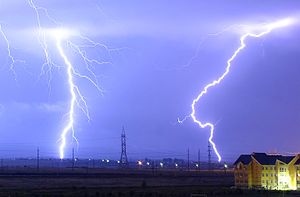Some inventores are:
Thomas Edison, Benjamin Franklin, Marconi, and Mr. Bell

Acceleration is produced when a force acts on a mass. The greater the mass (of the object being accelerated) the greater the amount of force needed (to accelerate the object). |
. Never work alone in the laboratory. No student may work in the science classroom without the presence of the teacher.
4. When first entering a science room, do not touch any equipment, chemicals, or other materials in the laboratory area until you are instructed to do so.
5. Perform only those experiments authorized by your teacher. Carefully follow all instructions, both written and oral. Unauthorized experiments are not allowed.
6. Do not eat food, drink beverages, or chew gum in the laboratory. Do not use laboratory glassware as containers for food or beverages.
| |||||
7. Be prepared for your work in the laboratory. Read all procedures thoroughly before entering the laboratory. Never fool around in the laboratory. Horseplay, practical jokes, and pranks are dangerous and prohibited.
8. Always work in a well-ventilated area.
9. Observe good housekeeping practices. Work areas should be kept clean and tidy at all times.
10. Be alert and proceed with caution at all times in the laboratory. Notify the teacher immediately of any unsafe conditions you observe.
11. Dispose of all chemical waste properly. Never mix chemicals in sink drains. Sinks are to be used only for water. Check with your teacher for disposal of chemicals and solutions.
12. Labels and equipment instructions must be read carefully before use. Set up and use the equipment as directed by your teacher.
13. Keep hands away from face, eyes, mouth, and body while using chemicals or lab equipment. Wash your hands with soap and water after performing all experiments.
14. Experiments must be personally monitored at all times. Do not wander around the room, distract other students, startle other students or interfere with the laboratory experiments of others.
15. Know the locations and operating procedures of all safety equipment including: first aid kit(s), and fire extinguisher. Know where the fire alarm and the exits are located.
16. Know what to do if there is a fire drill during a laboratory period; containers must be closed, and any electrical equipment turned off.
| |||||
17. Any time chemicals, heat, or glassware are used, students will wear safety goggles. NO EXCEPTIONS TO THIS RULE!
18. Contact lenses may be not be worn in the laboratory.
19. Dress properly during a laboratory activity. Long hair, dangling jewelry, and loose or baggy clothing are a hazard in the laboratory. Long hair must be tied back, and dangling jewelry and baggy clothing must be secured. Shoes must completely cover the foot. No sandals allowed on lab days.
20. A lab coat or smock should be worn during laboratory experiments.
| |||||